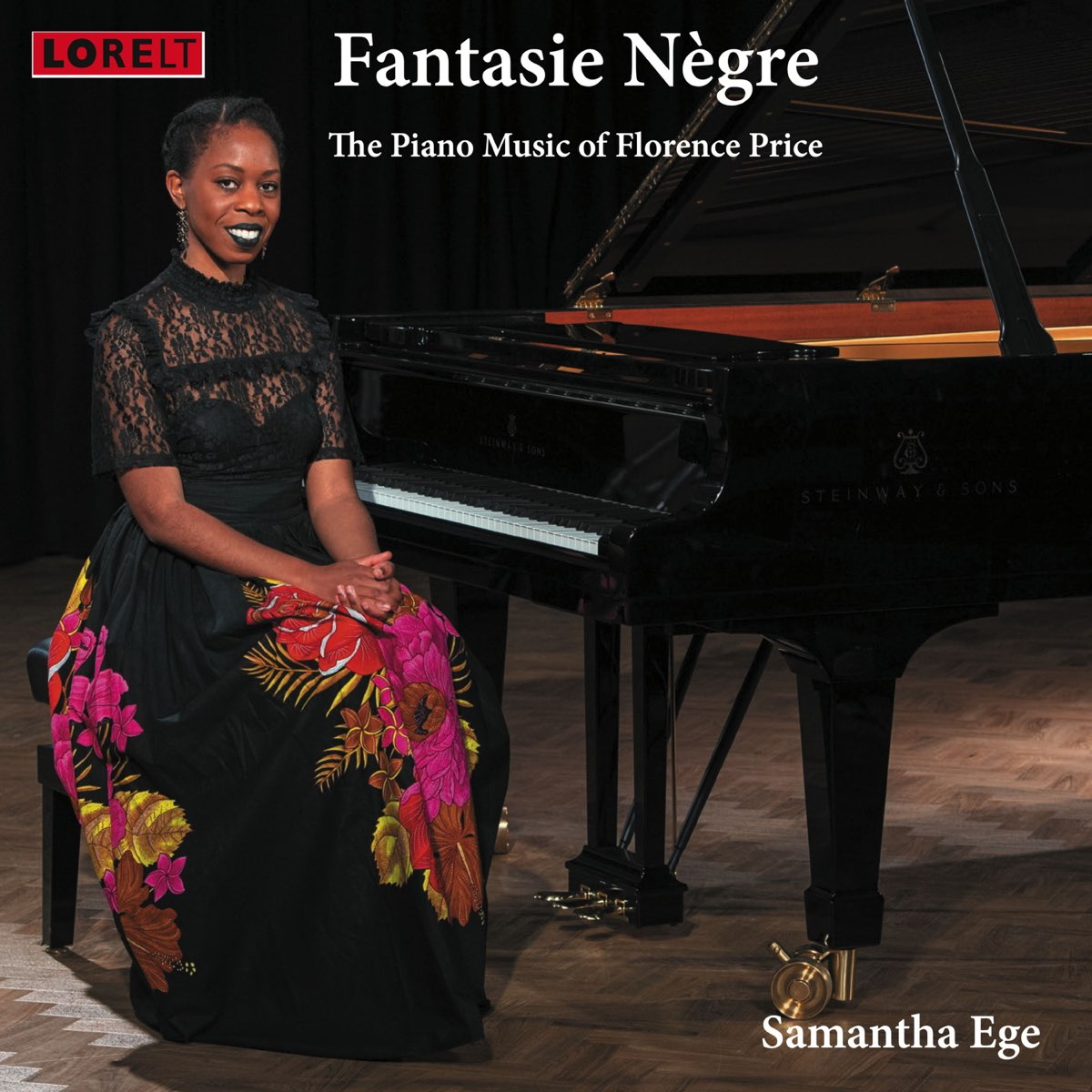Fantasie Nègre: The Piano Music of Florence Price
Vital listening, beautifully recorded

For the first of this week's posts celebrating International Women's Day (another article will feature a disc containing works by Rebecca Clarke, Sadie Harrison and Nicola LeFanu, among others), we find the musicologist and pianist Samantha Ege celebrating the music of Florence Beatrice Price (1887-1953). The recording is issued initially digitally-only on Monday, March 8; the hard copy CD release will be on April 9, 2021 (at which point we will add a purchase link for that incarnation at the bottom of this article). As a launch event for the album, Dr Ege gave this talk at Lincoln College, Oxford:
Dr. Ege's doctoral thesis, at the University of York, was entitled The Aesthetics of Florence Price: Negotiating the Dissonances of a New World Nationalism. A keyword in that title is dissonance: dissonance not necessarily in the musical sense, more of the dissonance between Price's Weltanschauung and that of the prevailing, male-dominated aesthetic. Old and New Worlds collide, amidst a music that seeks to proudly retain its African roots.
In that recital above Dr Ege concentrates on the lives and legacies of Black women composers in Chicago: Florence Price, Nora Douglas Holt, Margaret Bonds and Betty Jackson King, all part of what has been termed the "Negro Renaissance".
The four major works on the disc are the Fantasies Nègres by Florence Price, augmented by three Snapshots and three Untitled Sketches. Seeing the four Fantasies laid out with pieces separating the second, third and fourth brought to mind discs of Chopin Scherzos or, even more relevantly, Ballades in which the four are interspersed with smaller works. The parallel kind of works: listen to the expansive, quasi-improvised beginning to the first Fantasie Nègre and it really does feel like the beginning of a Ballade-like narration. As Dr Ege says in her eloquent booklet note, these are "pieces that display euphoric blends of African American folksongs and German Romanticism". Worth noting, as again Dr Ege does in her booklet note, that the hybrid title Fantasie Nègre mixes languages; just as Price herself mixed native folksong with a European-derived formal basis. Let's hear the Second (I'll explain why the Second not the First in a moment) in performance by Dr. Ege:
Florence Price had studied composition with George Whitefield Chadwick at the New England Conservatory of Music (where her majors ahd actually been in piano and organ). The Fantasie No. 1 dates from 1929; the remaining three from 1932, the latter the year of successes (plural) in the Rodman Wanamaker Music Awards: one for her Symphony in E-Minor, one for her Piano Sonata in E minor.
It's worth hearing one movement from the Symphony to see just how expert Price's hand is before we move on to focus on more of the piano music - we're Classical Explorer, after all. And that's why I gave you Fantasie Nègre No. 2, which is in G-Minor; No. 1 is in E-Minor, as is the following orchestral excerpt, and one can have too much of a good thing! You might hear some Dvořák in the background of the first movement of this symphony, but you may hear pentatonicism, too; and just listen also to the individual woodwind writing of the second subject group:
(This is from a Naxos disc that couples the First and Fourth Symphonies: the hungry Frorence Price enthusiast is also encouraged to invesigate a performance of the First Symphony on Albany Records, coupled with Price's Piano Concerto. Both links are given below).
Price displays a Schumannesque affinity with the miniature (and evinces some of his supreme simplicity, too). This is heard in the Untitled Sketches included by Ege (not to be confused with another work by Price, Sketches in Sepia). With the third, I was again brought back to Chopin, but this time the Mazurkas: short, beautiful, perfectly formed, taking just the right amount of time to say what they have to say - descriptions that could equally apply to Chopin or Price.
The Third Fantasie Nègre required a significant amount of detective work from Dr Ege, who managed to reconstruct it in a manner that sounds a bit like putting together a manuscript jigsaw!. It is a gorgeously expansive work, the major-mode passages radiant.
Separating the Third and Fourth Fantasies is a set of three Snapshots, a suite in three movements written in 1949. Here we move towards the Impressionists, as in this simply beautiful "Moon behind a cloud," (which one almost feels should be called "La lune derrière un nuage"!):
It is in the final Fantasie Nègre that Price seems to draw it all together, an expansive work of huge integrity. It needs a musician with the intelligence and the superb technique of Dr Ege to do it justice, and what a privilege it is to hear it in her safe hands:
Here is Dr Ege's own introduction to the album:
Beautifully recorded at my own Alma Mater, the University of Surrey (home of the famous Tonmeister - recording engineer - course), this is a beautiful album. With the spotlight so strongly on Florence Price, it is easy to forget the ease with which Dr Ege combines intellect, emotion and technique.
Vital listening.
Here's the link to Apple Music, and below it the Amazon digital release and the promised supplementary linksm plus Spotify links:


